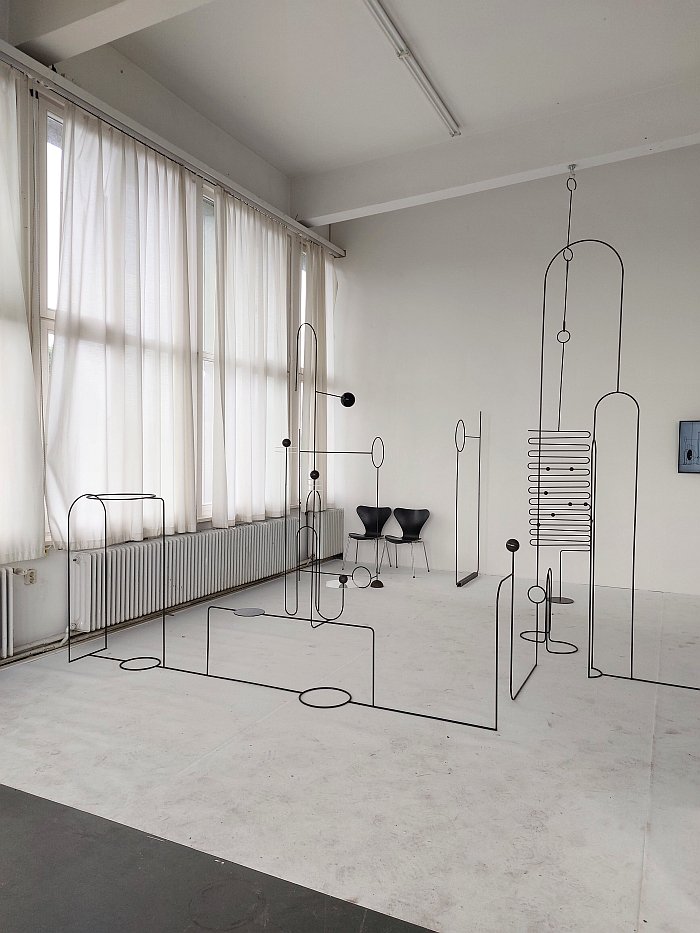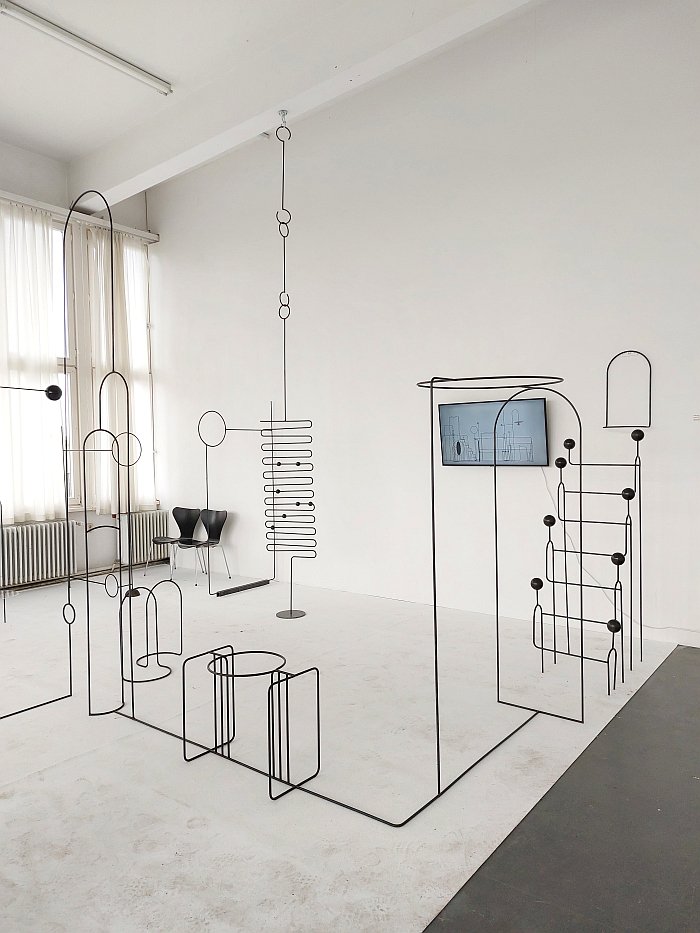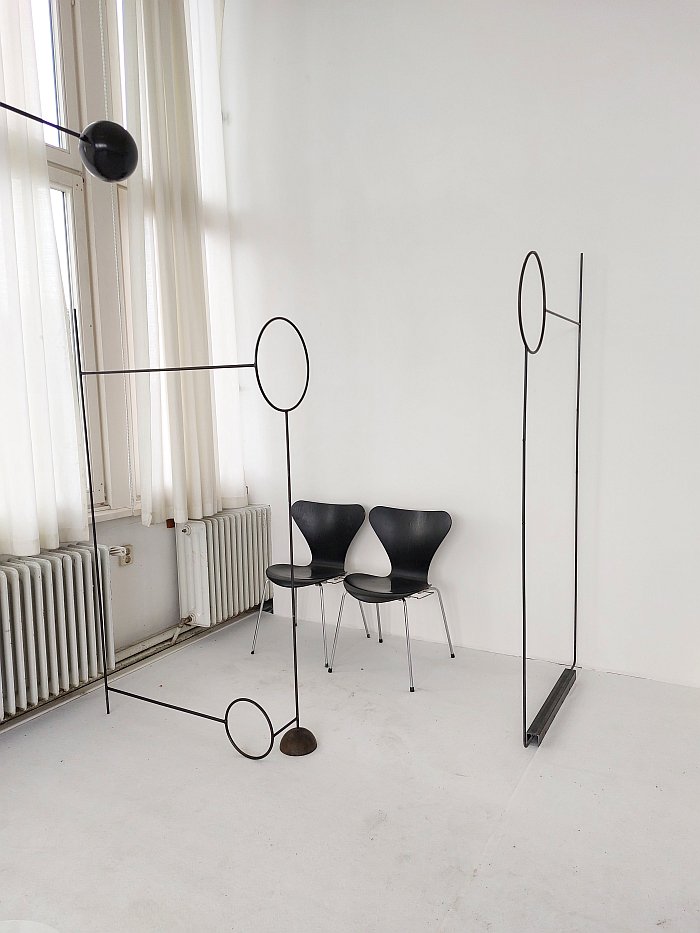As we noted, almost exactly 12 months ago, although we here at smow Blog are more or less fully up and running again after the Covid enforced disruption, the extremely complex nature of the smow Blog machinery means that there are still a few elements of the whole that are awaiting a proper re-boot, including, as we noted almost exactly 12 months ago, our famed, and falafel fixated, annual #campustour through European design school summer exhibitions.
Which doesn't mean that we aren't visiting design school summer exhibitions. We very much are. Nor does it mean we aren't eating falafel. We very much are. Just means we're doing so in a much less structured, less coherent, manner. And means that we don't always have the time and space to post from those showcases we visit. But do always try. Last year, admittedly, our attempts didn't get much beyond Weimar. And (nominally) Brussels. Although we were at a great many more.
This year we're hoping for a much improved number of postings, starting in Hamburg and the Hochschule für Bildende Künste's 2023 Graduate Show, Unfinished Business.......
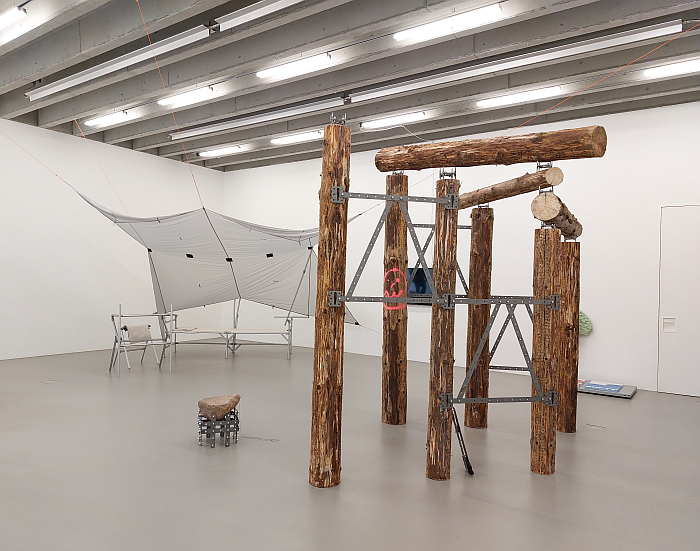
Tracing its (hi)story back to 1767, and counting the likes of, and amongst many, many others Max Bill, Margret Hildebrand, Peter Raacke, Julia Lohmann, Dieter Rams or Ralph Sommer amongst its many former design Professors, and, yes, the last two names were very deliberately set alongside each other, we discussed the (hi)story of the Hochschule für Bildende Künste, HFBK, Hamburg in context of our visit to the.......
.......except we didn't. Despite the HFBK Hamburg being one of our more regular #campustour stops, it appears we have never, ever, posted from a HFBK summer exhibition. Which is ridiculous. For not only did we regularly have to perform improbable temporal contortions, had to properly disrupt the space-time continuum in order to fit Hamburg into our schedule, but as a design school it is also one of the more interesting and informative, one where product design, conceptual design, industrial design, theoretical design, anti-design, social design et al have long sat happily beside one another, and thereby helped illustrate the futility of such sub-divisions of design.
So we can't, as we planned, refer you back to a previous post detailing the (hi)story of design education at the HFBK Hamburg, and we won't tell that (hi)story here, you'll have to research it yourselves, for we will jump straight into the 2023 Graduate Show.
A 2023 Graduate Show that in terms of design presented the results of Prof. Jesko Fezer's Experimental Design class and Prof. Konstantin Grcic's Open Design class.......
....... or at least we hope that's all it was. For reasons best known to themselves the HFBK Hamburg decided against publishing any sort of information detailing what could be viewed where at the 2023 Graduation Show, preferring to leave visitors to wander the corridors to meet what they met. And while randomisation and map-less travel is, without question, one of the better methodologies to reach your destination, decision free decision making often resulting in the best, most durable, decisions, getting lost being one of the better ways to locate yourself, and while, yes, we should all let serendipity into our lives a lot more than we currently do, occasionally turn off an app or two and see where your life goes; at an exhibition it is useful to at least know where those rooms you are interested in can be found. Particularly when your looking for design in a predominately art focussed institution. You can still wander all the corridors in a random fashion, turning left and right for no reason, and peak in all the ateliers you pass. But, if your looking for, say, for example, the very small amount of design amongst a plethora of art, it is helpful to know where it is. So we asked, and the information we got was rooms 331, 332 and the Atelier Haus. If there were others, and in the past there have been, sorry, we missed you; but on this occasion we can't really attach any real blame to ourselves. Unlike in the majority of cases when we miss very obvious things. Did we ever tell you about the time we had to make an extra trip to Frankfurt because we missed 60% of an exhibition on account of not reading a sign saying the exhibition continues this way.......
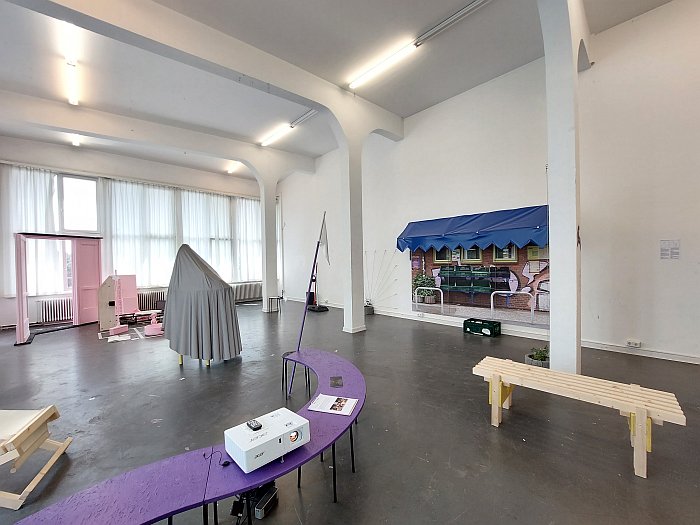
As ever in context of design school summer showcases, and as we will never tire of repeating, student projects aren't about developing an actual product that can actually be marketed, far less about developing something that can be comprehensively explained on Instagram or TikTok; rather student projects are always about what the student got from the project, how the student approached the project, how the development of the project influenced and informed the students approach to their work, how the development of the project influenced and informed the students understandings of their function, their responsibilities, design's function, design's responsibilities, the relationships between design and society, between user and object/system/society, how the development of the project influenced and informed their positions on and to materials, processes, technology, how the development of the project influenced and informed the development of the project etc, etc, etc. And, ultimately, how the project influenced and informed the students position to and on design. The end result is in many regards an irrelevance. But it is the access point for the rest of us. Is the start of a conversation.
At the 2023 HFBK Hamburg Graduate Show we had, and in many are still having there being a lot unfinished business from our side, highly enjoyable conversations with a great many projects, including with, for example, Probesitzen am Hansaplatz [Sitting as a process as explored in context of Hansaplatz, Hamburg] by Irini Schwab realised in context of Jesko Fezer's Experimental Design class, a project that, and summarising dangerously, established a collaborative, community, platform and framework to develop furniture items, primarily though not exclusively seating objects, by and for the varied and various residents around Hamburg's Hansaplatz, a public space, in many regards closely associated with, and very reflective of, documentative of, the (hi)story of, the many lives of, Hamburg since the late 19th century. And a project which aside from reminding us all that public spaces are thus-called because they are the property of the public at large and are to be defined by the public at large in all its diversity, a diverse public at large as exemplified by Hansaplatz, or at least should be the property of and defined by the public at large, the reality today being very different, also allowed and allows access to some valuable considerations on the provision of street furniture, the function of street furniture and the ownership of street furniture. While also realising numerous seating solutions that arguably no professional designer could ever realise, and in doing so helps advance and expand understandings of seats, sitting, sitter and the myriad fluid relationships between the three.
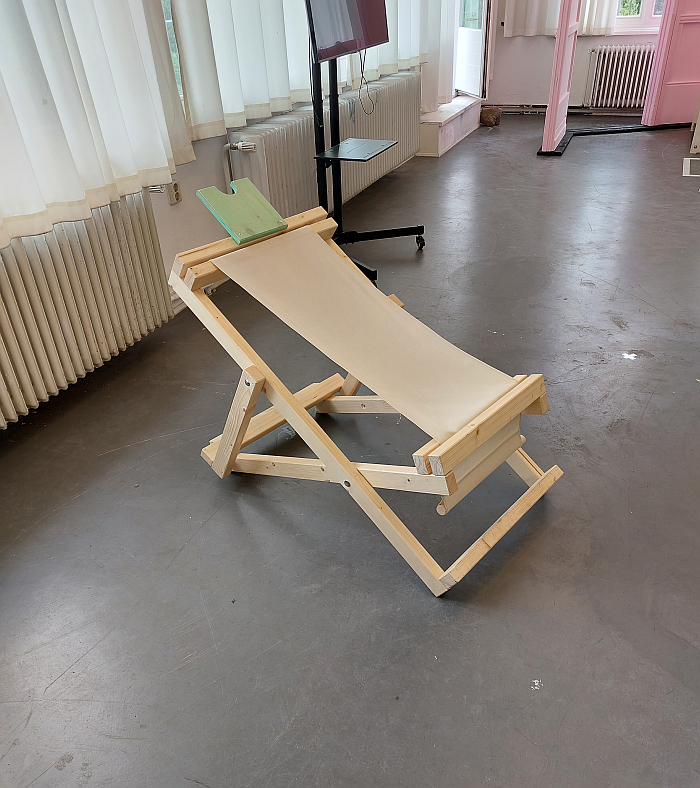
On a more personal, private, level, if staying in Jesko Fezer's Experimental Design class, the project Care. A semiotic exercise by Lukas Schmidt, or perhaps more accurately the public presentation of Care. A semiotic exercise by Lukas Schmidt, and, again, summarising to the point of misrepresentation, saw Lukas ask visitors to write down which object they personally associate with sensations of comfort, support, solace, reassurance, etc, and why; with Lukas subsequently crafting models of some of the proposed objects, which he then presented alongside the visitors comments. Thus, when we were there, we met a telephone as a connection with those important to you, a mocha pot which supplies the coffee which, we suspect, is actually that which brings the proposer comfort, support, solace, reassurance, etc, and also by an ashtray which, amongst other aspects, is, for the individual who proposed it, important in context of the social aspect of smoking, the camaraderie of shared smoking time, which reminds us all that smoking isn't just paying over the odds to slowly kill yourself, nor only chemical dependency driven in the name of corporate profit, but has also long been about more than the simple act of smoking, both in formal and informal culture contexts, one thinks of the office cigarette break, or of the great many cultural rituals that involve smoking as part of a collective experience. And thus if we want people to stop smoking we need to find alternative methods of enabling the informal, temporary social interaction enabled by cigarettes. And an ashtray that also reminds us all that back in the day ashtrays were one of those things designers naturally and self-evidently designed, our thoughts flicking in particular to the myriad ashtrays that a Wilhelm Wagenfeld designed and which can be enjoyed in Wilhelm Wagenfeld A to Z at the Wilhelm Wagenfeld Haus, Bremen; but who designs ashtrays today? Exactly. Which is nice perspective on the relationships between designers and contemporary society.
But a project which for all highlights those intimate personal relationships we all entertain with objects that go far beyond any practical, technical functionality, if one so will, embodies that emotional functionality that a designer can't give to an object, despite what the H**** snake oil sellers tell you, but can support it in that room is left for free interchange with an object: small children invariably have their soft toy which serves a myriad functions, and in many regards we all continue to find comfort, support, solace, reassurance, etc, in objects as we travel through the adult world, one can, arguably, speak of an innate human need to associate with objects, an innate need, in context of comfort, support, solace, reassurance, etc, which may explain religion. And a project which reminds us all that despite the regularity with which the phrase is used, there are no such thing as anonymous objects only objects that the majority of us don't consider on a daily basis, focussing as we tend to on those that shout at us and demand our attention. But all too easily overlooked objects which are often the most important objects, certainly often more important than those objects which shout and demand our attention and thereby distract us from the simple beauty of existence. Which, yes, is very much an analogy and metaphor for human society.
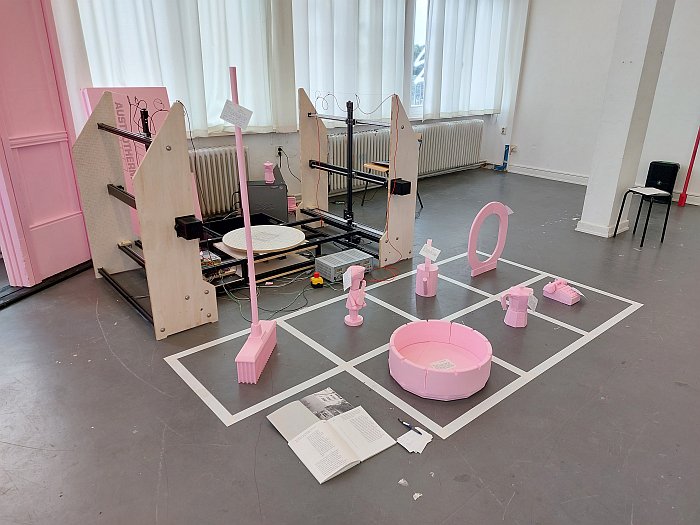
A couple of weeks ago we were in the process of getting round to starting to finish off our post from Hot Cities: Lessons from Arab Architecture at the Vitra Design Museum Gallery when we realised the Vitra Design Museum had ended the presentation much earlier than planned. Which caused a full-on chaos in our office as we scrambled to find a text to take its place in the roster. Why they pulled it, we no know, there certainly wasn't any audible announcement; but we presume it was on account of a very angry denouncing of it in Der Spiegel. Very, very, angry. And while as an exhibtion it did have an awful lot of problems, as an archive it had an awful lot of promise, if you actually took the time to engage with it, which admittedly was a lot easier said than done. And as an archive it also allowed for some interesting and informative insights into applications of traditional, long-established, analogue vernacular cooling and local-level spatial climate regulating technology in North Africa and the Middle East, which could, potentially, be of use as Europe becomes uncomfortably hot. Analogue vernacular technology such as, for example, wind-towers, objects which were very much our big take home, that and the cheesecake from the Depot Deli. Both of which we plan to explore in more detail and intensity in the coming months.
And analogue vernacular technology that has proven its worth in North Africa and the Middle East over time, and which arguably has a place, and an important function, in Europe going forward, that, we'd argue, is very much reflected in and embodied by the Fiasco radiatore developed by Valerio Sampognaro in context of Konstantin Grcic's Open Design class. Whereby the Fiasco of the project title has less to do with the fiasco of Hot Cities as with the Italian for bottle/flask. Inspired by a traditional Middle Eastern room cooling system involving jars of water placed in the so-called Mashrabiyas, those bay window/extensions on many upper floors, and also inspired by the Sicilian maiolica handwork, and also inspired by radiatore, radiators, Fiasco radiatore is, in essence, a system of clay Fiasco which when filled with water allow for an exchange between the cool of the water and the warmth of the air and thereby, so the theory, help cool a room. And certainly the Fiasco we touched in Hamburg were noticeably and tangibly cold, thus the concept works, the question is always the efficiency, and how big a Fiasco you need, or how many Fiasco you need, for a noticeable effect.
Over the years we've seen numerous student projects similarly employing such analogue cooling processes, primarily as architectural components or as passive fridges, and similarly have also seen several projects seeking to re-imagine the vernacular dew capturing systems employed for all across northern Africa, but what particularly caught our attention with Valerio's project is that it's as analogue in its production as much as it's operation, its a (relatively) simple craft process, meaning it offers the possibility of low-cost, low-tech, local production and thereby also helping support local economies, is as economically and socially sustainable as it is environmentally; it's a modular system thereby allowing for easy adaption as realities and demands change, it can always be extended and/or reconfigured; and it can work at various scales, be that as large units for cooling say an office space or at a window sill scale thereby allowing one to employ, as Valerio suggests, a unit of Fiascos as both a decorative vase and a functional cooling unit.
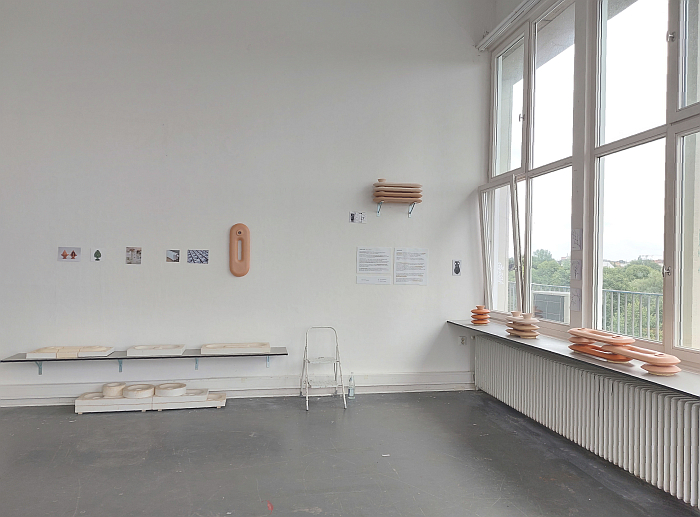
As oft opined in these dispatches, for all that interiors are often understood as being about an arrangement of objects in a space, one can also approach an interior space as an active component of the design process, rather than a passive result. If one so will can understand an empty room as a 3D space, arguably preferably 4D, rather than the 2D space it is normally considered.
So is, we'd argue, very much how one can approach a Verner Panton, a designer who for all that he, without question, created objects, a large part, ¿the larger part? of his oeuvre is about bequeathing a space a functionality, a physical functionality, an emotional functionality, an empowering functionality, a playful functionality; similarly the 2014 installation The End of Sitting by RAAAF & Barbara Visser which filled a space with a collection of monoliths of various forms by way of creating an active office landscape freed from the dogma of desks and chairs. Then there is, or at least was, and that far too briefly, Friedrich Kiesler's 1930 Flying Desk, a work, a concept, which is but a disruption of, an intervention in, space that produces both a functional desk like object and also acts a definer of space within space, creates rooms that don't exist in a space that remains open and unbroken, yet itself doesn't actually exist. Is but a suggestion of a reality.
Linie Raum by Hansil Heo can, we'd argue, very much be seen in a line, pun very much intended, with Kiesler's Flying Desk, but takes the principle to glorious extremes. Reminiscent of Osvaldo Cavandoli's La Linea cartoon, Linie Raum, as the title neatly implies, can be understood as a single line which in the course of its endless flowing not only divides space into functional chunks without questioning or challenging the space's right to exist as an undivided whole, but also regularly takes on forms suggestive of furniture, whereby what they actually are, how they are to be used, how many varieties of use they enable, etc, is very much up to you.
And for all that Linie Raum is unquestionably primarily a conceptual project reflecting on, and offering an invitation for reflections on, furniture, interiors, relationships, space, existence, etc, etc, etc as an actual modular system it, arguably, has potential perhaps less in domestic spaces but certainly for public, communal, spaces, be they indoors or outdoors. And where it would have the potential to bequeath that space the elasticity that Friedrich Kiesler demanded and sought.
Full information on the HFBK Hamburg design department can be found at http://design.hfbk-hamburg.de
As ever, not mentioning a project doesn't mean we didn't like it, just means time and space are limited, apologies to all the unnamed.
